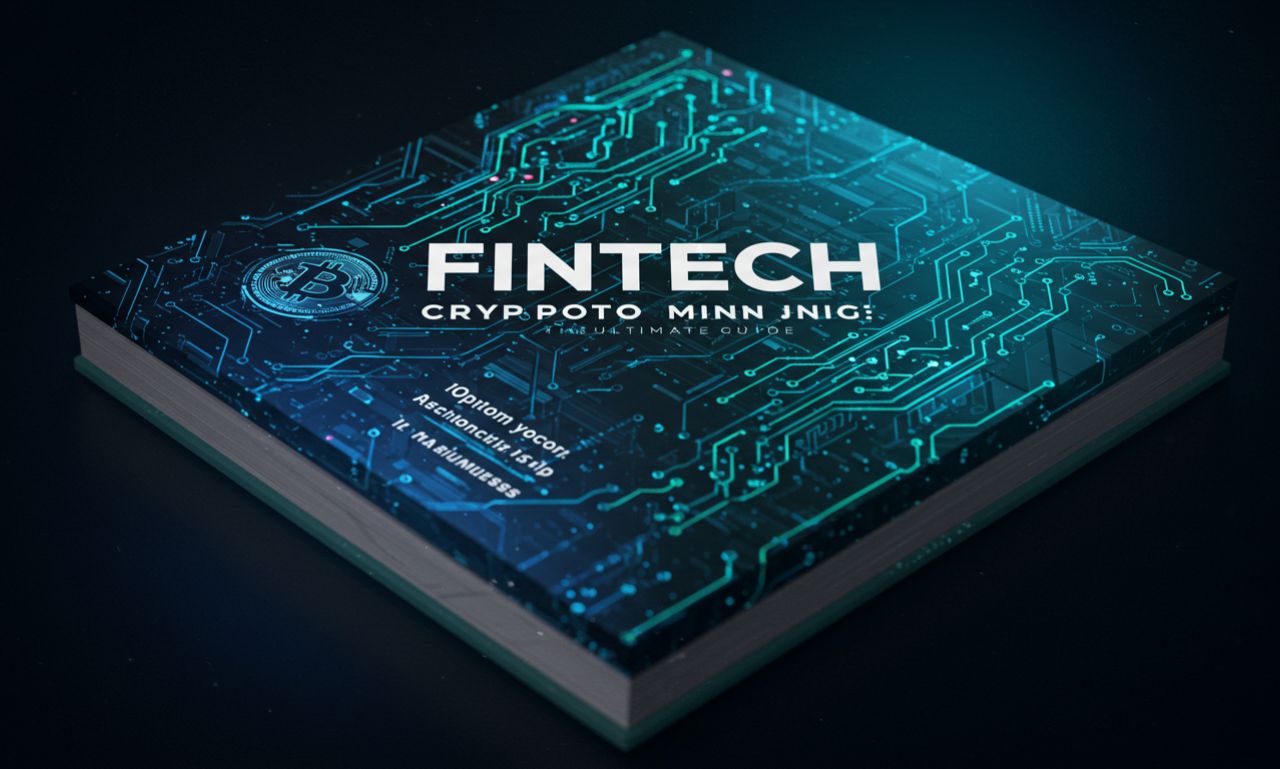Fintech crypto mining represents the convergence of financial technology and blockchain validation processes. This innovative sector has grown into a $15 billion industry, transforming how digital currencies are created and transactions are verified. By combining advanced cryptography with decentralized finance (DeFi) principles, crypto mining serves as the backbone of major blockchain networks.
The process involves powerful computers solving complex mathematical problems to validate transactions and secure networks. Successful miners earn cryptocurrency rewards, creating financial incentives for participation. This system not only maintains blockchain integrity but also introduces new coins into circulation following predetermined monetary policies.
As traditional finance increasingly intersects with blockchain technology, understanding crypto mining becomes essential for investors, tech enthusiasts, and financial professionals. This guide examines the technical, economic, and regulatory aspects shaping this dynamic field.
How Crypto Mining Works in Fintech
The Blockchain Validation Process
Crypto mining performs two critical functions: transaction verification and new coin creation. Miners compete to solve cryptographic puzzles, with the winner adding a new block to the blockchain. This proof-of-work (PoW) mechanism ensures trustless consensus across decentralized networks.
Each validated block contains multiple transactions that are permanently recorded. The mining difficulty automatically adjusts based on network participation, maintaining consistent block creation times (e.g., Bitcoin’s 10-minute target). This elegant system prevents double-spending while distributing control across participants.
Modern fintech applications have enhanced mining efficiency through optimized algorithms and specialized hardware. From individual hobbyists to industrial mining farms, participants contribute computing power in exchange for cryptocurrency rewards and transaction fees.
Mining Pools and Collective Operations
Individual mining has become impractical for most cryptocurrencies due to intense competition. Mining pools allow participants to combine resources and share rewards proportionally to their contributed processing power. These collectives dominate major networks, with some pools controlling significant portions of total hash power.
Pool operators typically charge 1-3% fees while providing stable income streams for members. Some fintech platforms have integrated pool mining directly into investment products, allowing users to earn without managing hardware. However, concerns about centralization persist as large pools gain disproportionate influence.
Cloud mining services represent another fintech innovation, renting out mining capacity to customers. While convenient, these services carry risks including scams and contract disputes that potential users must carefully evaluate.
Alternative Consensus Mechanisms
Proof-of-Stake (PoS) has emerged as an energy-efficient alternative to traditional mining. Validators are chosen based on their cryptocurrency holdings rather than computational power, reducing environmental impact. Ethereum’s transition to PoS (The Merge) marked a watershed moment for sustainable blockchain operations.
Other innovative models include:
-
Proof-of-Capacity (storage-based validation)
-
Proof-of-History (time-based verification)
-
Hybrid systems combining multiple approaches
These developments reflect fintech’s ongoing evolution toward greener, more scalable blockchain infrastructures while maintaining security and decentralization.
Essential Mining Hardware and Software
ASIC Miners: Specialized Powerhouses
Application-Specific Integrated Circuit (ASIC) miners dominate Bitcoin and similar networks. These purpose-built machines offer unmatched efficiency but become obsolete quickly as technology advances. Leading manufacturers like Bitmain and MicroBT continuously release more powerful models, creating an arms race among professional miners.
GPU Mining: Flexible Alternatives
Graphics Processing Units (GPUs) remain popular for mining Ethereum-classic and other memory-hard cryptocurrencies. While less efficient than ASICs, GPUs maintain resale value and can be repurposed for gaming or AI workloads. The 2020-2021 GPU shortage highlighted tensions between miners and other computer users.
Mining Software and Optimization
Specialized programs like CGMiner, BFGMiner, and NiceHash connect hardware to blockchain networks. Advanced users employ overclocking, undervolting, and custom firmware to maximize efficiency. Fintech solutions now offer automated optimization tools that dynamically adjust settings based on cryptocurrency values and energy costs.
Economics of Crypto Mining
Profitability Calculations
Mining revenue depends on four key factors:
-
Cryptocurrency market price
-
Network difficulty level
-
Equipment efficiency (hash rate vs. power consumption)
-
Local electricity costs
Online calculators help estimate returns, but profitability can change rapidly. The 2022 crypto winter forced many miners offline as revenues failed to cover operational costs.
Operational Cost Structures
Electricity typically constitutes 60-80% of ongoing expenses. Miners strategically locate operations near cheap power sources like hydroelectric dams or flared natural gas sites. Other costs include:
-
Hardware depreciation
-
Cooling systems
-
Maintenance and labor
-
Facility leasing
Tax and Accounting Considerations
Most jurisdictions treat mined crypto as taxable income at fair market value upon receipt. Additional taxes may apply when selling or exchanging coins. Proper record-keeping is essential, tracking:
-
Acquisition dates and values
-
Mining expenses
-
Disposition records
Regulatory Landscape
Global Regulatory Approaches
Countries adopt varying stances toward crypto mining:
-
Supportive: El Salvador, Georgia, Iceland
-
Restrictive: China, Egypt, Qatar
-
Developing Frameworks: USA, EU nations
Key regulatory concerns include:
-
Energy consumption
-
Financial system integrity
-
Tax compliance
Licensing Requirements
Some jurisdictions require specific licenses for commercial mining operations. These may cover:
-
Money transmission
-
Securities handling
-
Energy usage reporting
Environmental Regulations
Increasing focus on sustainability has prompted:
-
Carbon emission limits
-
Renewable energy mandates
-
Energy reporting requirements
Risk Management Strategies
Market Volatility Hedging
Professional miners employ various tactics:
-
Futures contracts
-
Options strategies
-
Diversification across coins
Operational Risk Mitigation
Best practices include:
-
Equipment redundancy
-
Temperature monitoring
-
Fire suppression systems
Regulatory Contingency Planning
Savvy operators:
-
Maintain movable infrastructure
-
Monitor policy developments
-
Engage legal counsel proactively
Fintech Innovations in Mining
Decentralized Finance (DeFi) Integration
Emerging solutions enable:
-
Tokenized mining power
-
Yield-bearing mining positions
-
Automated reward optimization
AI-Driven Optimization
Machine learning applications:
-
Predictive hardware maintenance
-
Dynamic cost modeling
-
Intelligent pool selection
Institutional Mining Products
Financial firms now offer:
-
Mining-backed securities
-
Hashrate derivatives
-
Managed mining accounts
Environmental Impact and Solutions
Energy Consumption Analysis
Bitcoin mining alone uses ~150 TWh annually—more than many countries. Critics argue this energy could be better allocated, while supporters note increasing renewable usage.
Sustainable Mining Initiatives
Promising developments:
-
Stranded energy utilization
-
Carbon credit offset programs
-
Heat recycling systems
Efficiency Breakthroughs
Technological advances:
-
Next-gen ASIC chips
-
Immersion cooling
-
Optical mining concepts
Future Trends and Predictions
Mainstream Financial Integration
Expect:
-
Mining ETFs
-
Retirement account options
-
Banking service integration
Technological Evolution
Coming advances:
-
Quantum-resistant algorithms
-
Nano-mining devices
-
Space-based mining concepts
Regulatory Maturation
Likely developments:
-
Global standards
-
Energy reporting mandates
-
Security token classifications
Conclusion: The Evolving Mining Ecosystem
Fintech crypto mining continues evolving at breakneck speed. What began as a niche hobby has grown into a sophisticated financial sector blending technology, energy markets, and monetary policy.
Successful participants will need to navigate increasing complexity while remaining agile enough to adopt new technologies and adapt to regulatory changes. The coming years will likely see greater institutional involvement and technological innovation reshaping the mining landscape.
Those who understand these dynamics position themselves to benefit from one of fintech’s most transformative applications—the decentralized creation and validation of digital value.

